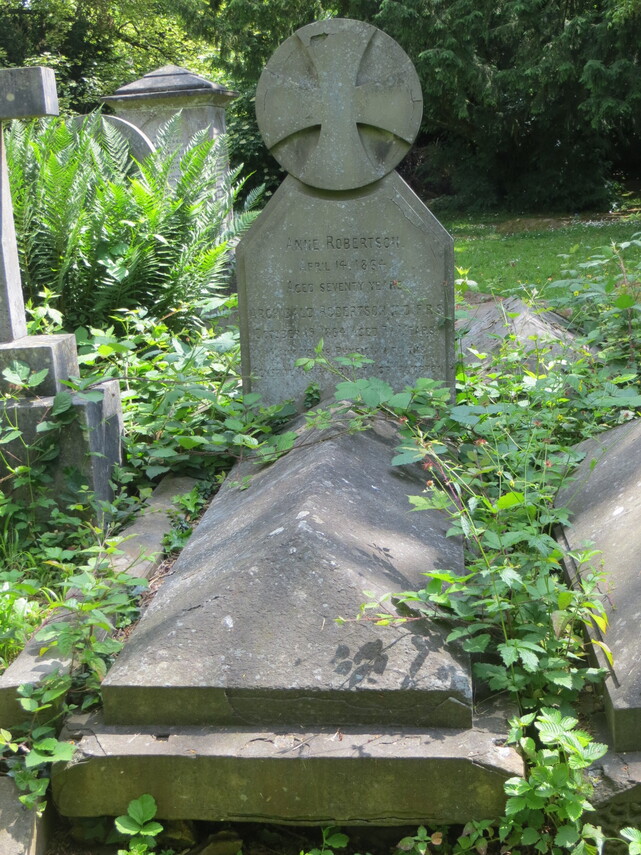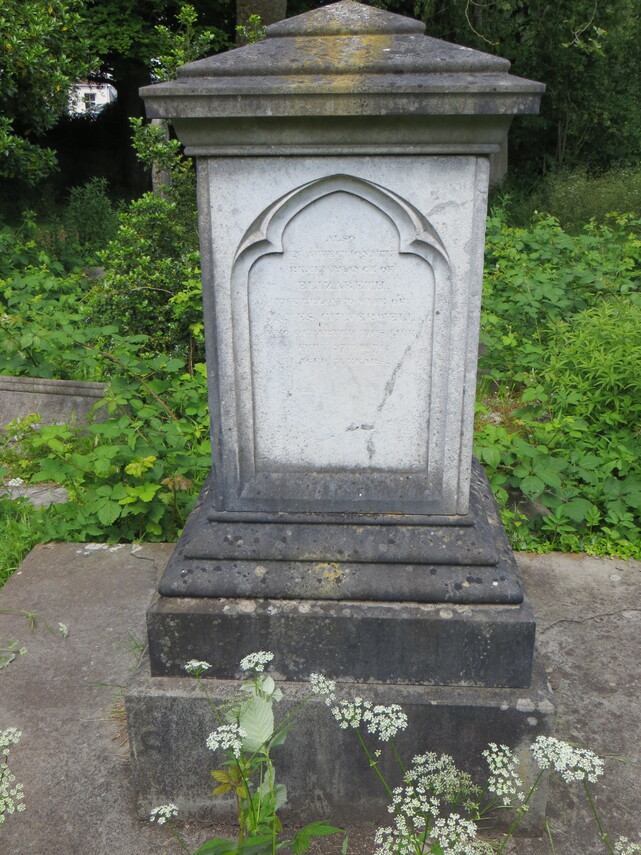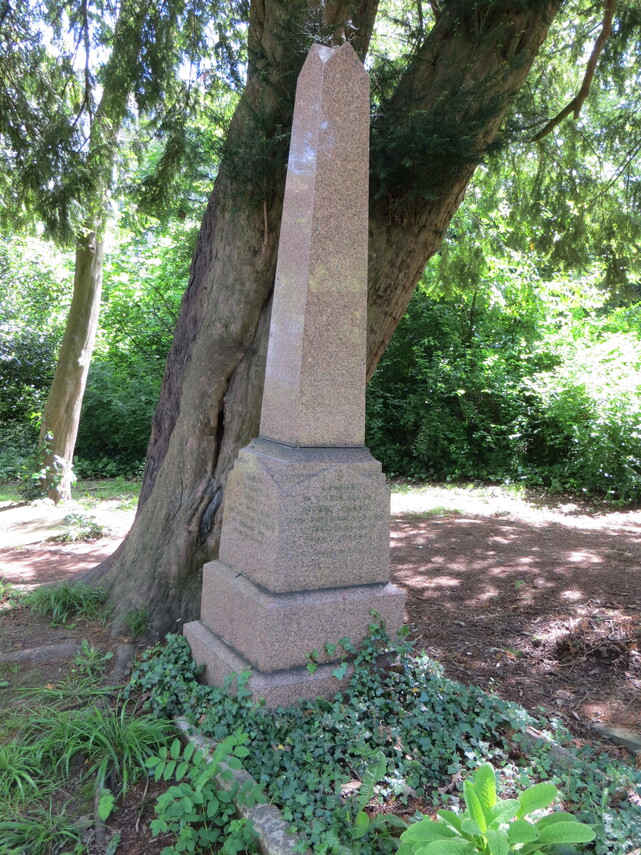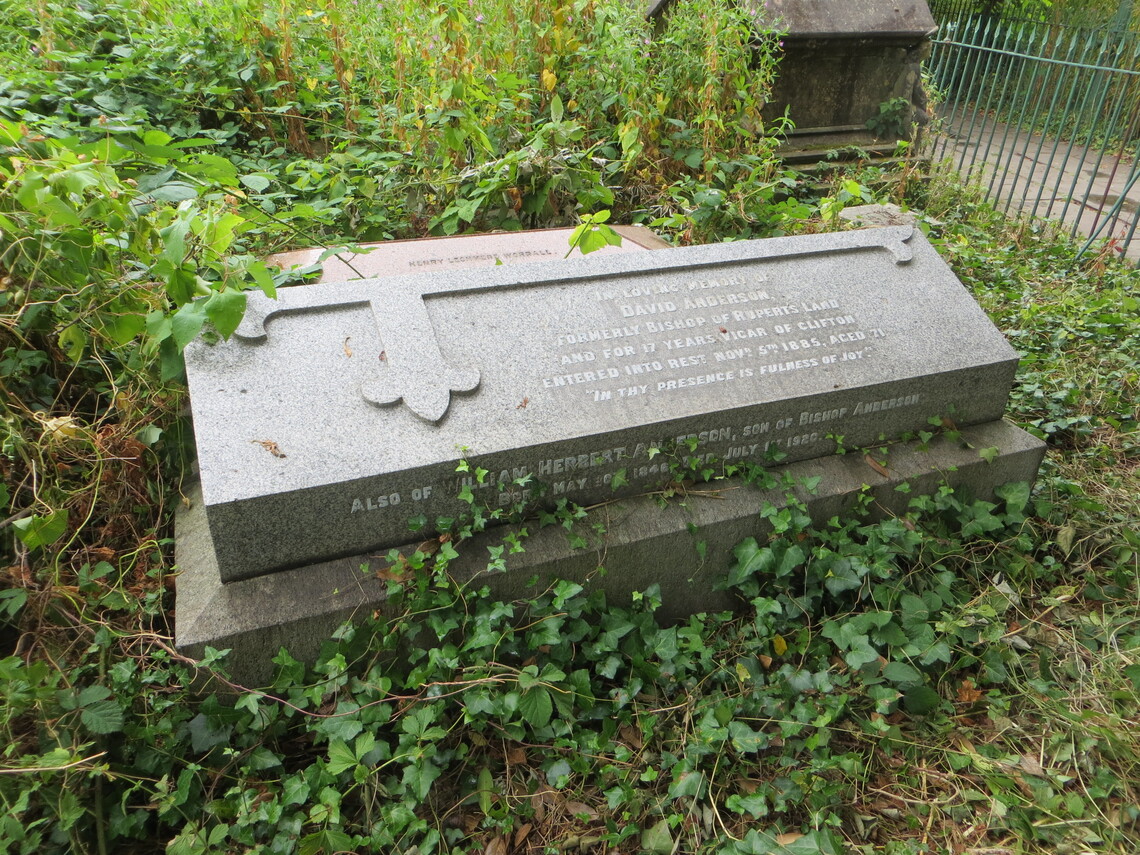On either side of Birdcage Walk lie the graves of those who lived and died in Clifton from the 1820s to the 1870s. During this time Clifton was transformed, growing from a small village into a fashionable health resort that finally settled into a prosperous suburb. The gravestones and memorials across the churchyard help trace this history. Through the stories of the dead, we can piece together a picture of nineteenth century Clifton life.
As early as 1792, Reed’s New Bristol Guide described Clifton as, “one of the most agreeable, healthy and pleasant villages in the kingdom.” Colonised by Bristol’s bourgeoisie, seeking refuge from the noise, filth and civil unrest of the city centre, Clifton also became a favourite retirement spot for professionals, military officers and minor gentry from across England, Ireland and the Empire.
One of these migrants was retired physician Archibald Robertson, who moved to 11 West Mall in 1853 with his wife Anne, his sister-in-law and several servants. Born near Dunbar in 1789, Robertson had served as an assistant surgeon during the Napoleonic Wars before setting up a successful practice in Northampton, where he was elected physician to the Royal Infirmary in 1820. Dying within six months of each other in 1864, Archibald and Anne Robertson are buried together in the churchyard.
Out on Clifton Down, Lieutenant Colonel Henry Browne Smith retired in some style to Alva House, where he lived until his death in 1866. Son of George Smith of Canton, a maverick merchant who traded between India and China during the eighteenth century, Henry Browne Smith had served with the 8th Madras Cavalry, protecting the interests of the East India Company. His memorial at the southern end of the churchyard is shared by his wife Jane Maria, who died ten years later at the age of 90.
James Culverwell was one of the merchants who moved up to Clifton from the city centre. By 1870, he had settled with his family at Litfield House on Clifton Down, where he died a fabulously wealthy man in 1892. James Culverwell is buried alongside his wife, Elizabeth and two of his children in a family tomb that he probably commissioned in 1858 when his eldest son, William died at Ilfracombe aged 25.
In 1739, John Wesley had been “pained” at seeing “many rich at Clifton Church” and since the new St Andrew’s church, consecrated in 1822, was largely funded by worshippers in exchange for private pews, it was inevitable that the nineteenth century congregation would be similarly prosperous. Writing his Bristol Churchgoer review for the Bristol Times, 30 September 1843, Joseph Leech disapprovingly noted,
“..the atmosphere of eau de Cologne and bouquet de la Reine, where the glitter of gilt-edged prayer books and the rustle of brocades present sounds and sights extraordinary to humble comprehensions.”
Nevertheless, this elegant world of material consumption had its advantages; it was good for business. The money that poured into Clifton meant that a Regent Street draper’s assistant, such as John Kingcome, could open his own linen draper and haberdashery shops, while his wife, Rosa, ran a dressmaking and millinery establishment. Kingcome became one of Bristol’s leading silk and linen merchants and when he died in 1880, he was buried in the churchyard alongside Rosa and their eight year old son, Henry Frederick.

In 1800, approximately one child in three died before their fifth birthday and as the memorials across the churchyard show, childhood mortality rates remained high throughout the century. One particularly poignant gravestone commemorates three little brothers: William John Williams, who died on 9 June 1831 aged 2 years; William James Williams, who died on 22 August 1832 aged 7 months and William Edward Williams, who died on 22 November 1840, aged 2 years and 5 months.
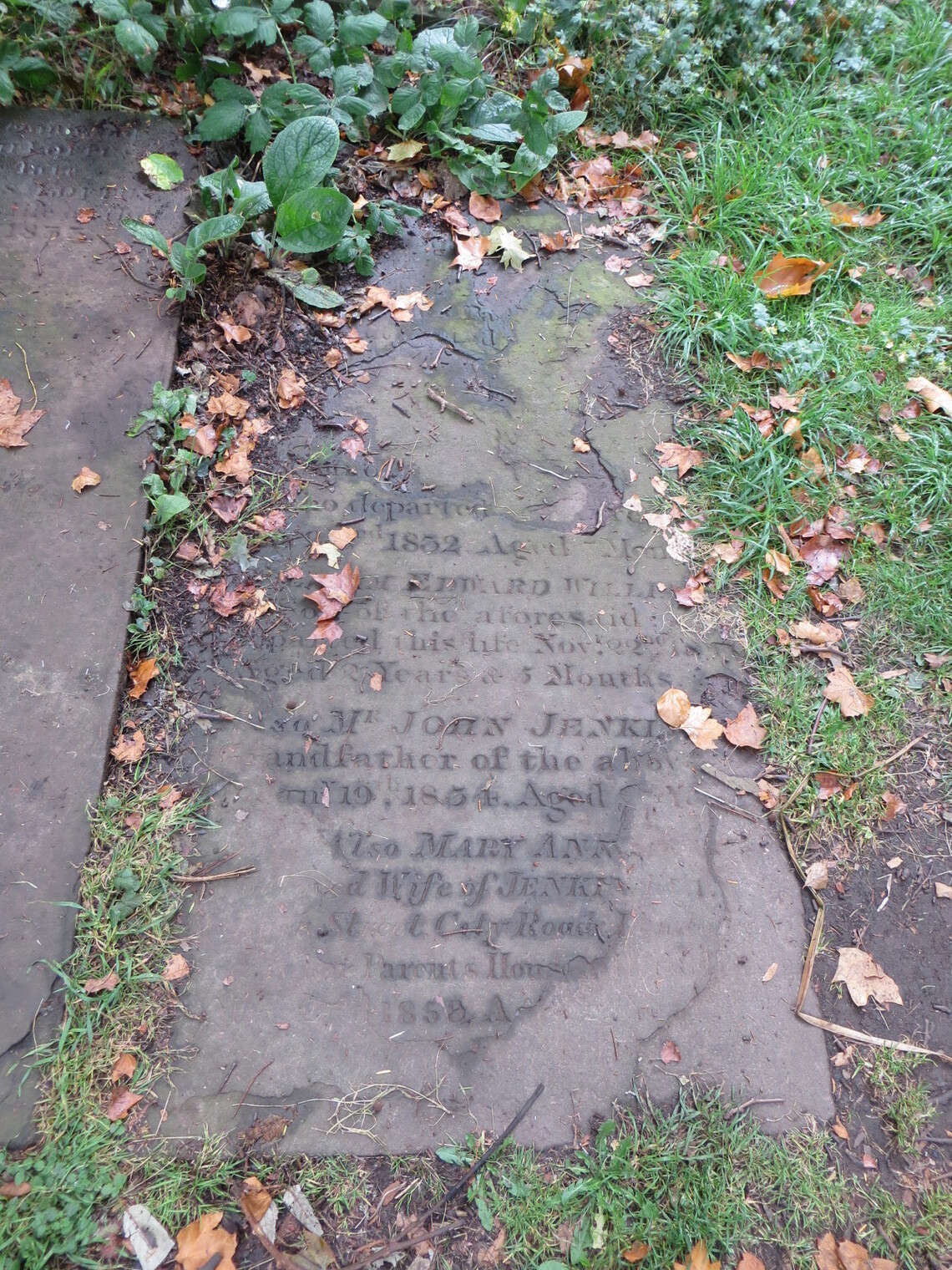
For Clifton parishioners, who maintained “the Protestantism of the Established Church of England”, the least suggestion of Christian symbolism carried the taint of popery, which is why many memorials in the churchyard – including the Celtic cross - have pagan origins. The pediment commemorating the family of banker Isaac Hodgson, who died in 1859, is one example of the popular classical style. Obelisks and pyramids, inspired by Ancient Egypt were also fashionable and there are several examples across the churchyard, including the granite obelisk chosen by master butcher Joseph Snook, who died in 1875.
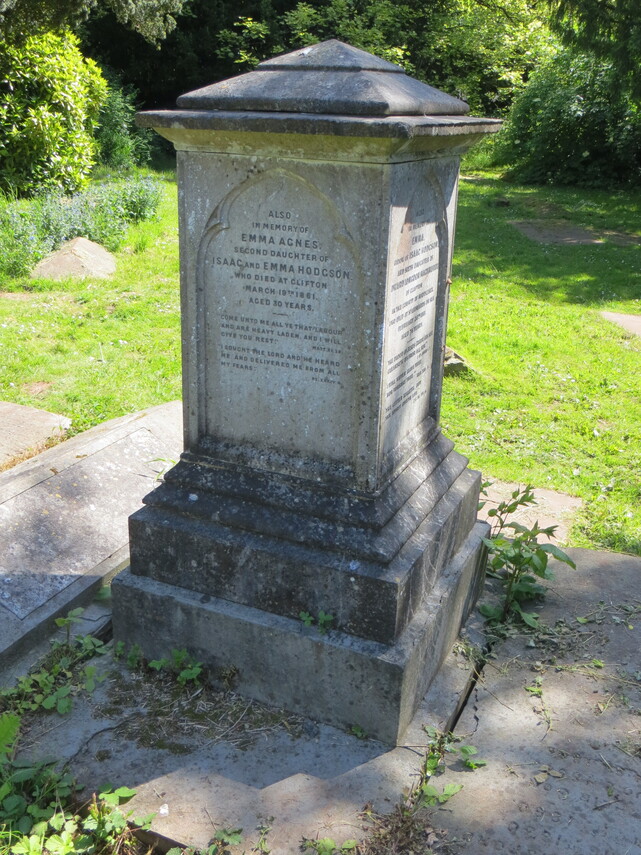
The funeral services for Joseph Snook and for Henry Browne Smith were taken by David Anderson, vicar of St Andrew’s from 1864 to 1881. In 1849, Anderson had been appointed the first Bishop of Rupert’s Land, the territory that would subsequently become the Canadian state of Manitoba, at a time of social and religious unrest. Retiring fifteen years later to the relative peace of Clifton, he died in 1888 and was buried with his sister and two sons close to the church.
In 1871, the churchyard closed to all except those who had reserved a burial plot and the story told by the memorials came to an end.
